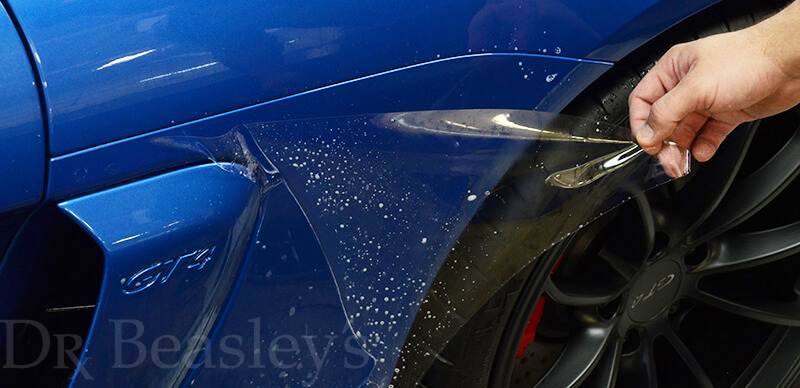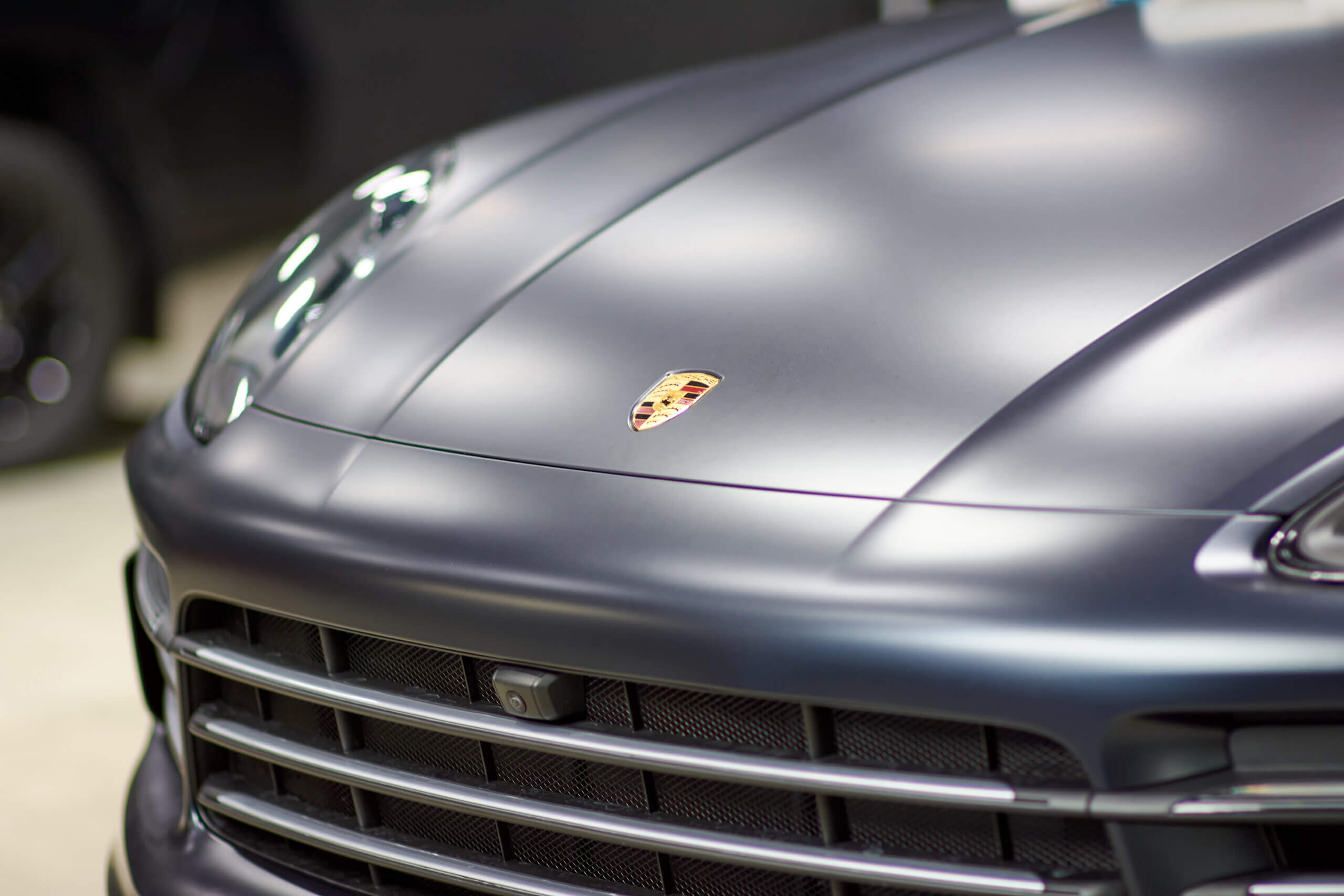How Paint Protection Film Shields Your Vehicle From Scratches, Chips, and Environmental Damages
In an age where car aesthetics and longevity are vital, Paint Security Movie (PPF) has emerged as a tactical option for safeguarding your automobile versus the unavoidable wear and tear of everyday driving. This advanced movie not only provides a powerful obstacle versus scrapes and chips however likewise supplies security from numerous ecological dangers that can endanger your vehicle's surface.

Understanding Paint Protection Film
Understanding Paint Security Film (PPF) begins with identifying its purpose and composition. PPF is a clear, polycarbonate urethane film made to safeguard a lorry's outside surfaces from a range of prospective damages. It is frequently applied to high-impact areas such as the hood, fenders, and bumpers, where the threat of scratches, chips, and abrasions is significantly boosted.
The film is engineered to soak up the impact of small particles, such as gravel and roadway particles, which can lead to surface area blemishes (paint protection film). Its make-up allows it to stick strongly to the paintwork while remaining versatile adequate to satisfy the contours of the lorry
In Addition, PPF is typically created with self-healing buildings, enabling it to recover from small scratches and swirl marks over time when subjected to heat. This characteristic boosts the longevity of the movie and preserves the vehicle's aesthetic appeal.

Advantages of Paint Security Movie
One of the standout benefits of Paint Defense Film (PPF) is its capacity to protect a car's outside from environmental risks and day-to-day wear. This transparent, resilient layer properly blocks damaging components like UV rays, bird droppings, tree sap, and roadway crud from harmful automotive paint. By preventing oxidation and fading, PPF helps keep the vehicle's aesthetic charm with time.
Additionally, PPF serves as an obstacle against chemical contaminants that can engrave or tarnish the paint surface area. Its self-healing residential or commercial properties enable small scrapes and swirl marks to go away when exposed to heat, ensuring that the automobile keeps a polished look without frequent detailing.
The setup of PPF can likewise boost the resale worth of a vehicle, as a well-preserved exterior is an eye-catching function for possible purchasers. This protective film is adjustable, permitting for customized applications to details locations, such as high-impact areas or full automobile insurance coverage, depending on the proprietor's choices.
Just How PPF Secures Versus Scrapes
Paint Defense Film (PPF) supplies a robust defense against scratches, making sure that an automobile's surface stays immaculate. This transparent, resilient film is crafted from advanced polymers that offer remarkable resistance to abrasions. When applied to vulnerable locations of a vehicle, such as the hood, fenders, and side mirrors, PPF works as a sacrificial layer, soaking up the effect of small scratches and stopping them from permeating the vehicle's paint.
The self-healing homes of numerous PPFs even more boost their efficiency. When subjected to warmth or direct sunshine, the film can recoup from great scrapes, going back to its smooth surface area and preserving the visual charm of the car. This feature not only prolongs the life of the paint beneath but additionally lessens the requirement for pricey repair services or touch-ups.
Furthermore, PPF try here is developed to adhere snugly to the surface of the lorry, which helps protect against dirt and debris from obtaining caught below. This limited bond guarantees that the movie remains efficient over time, supplying ongoing security versus the everyday damage that can diminish a vehicle's look. Overall, PPF sticks out as a proactive service for maintaining a vehicle's surface versus scrapes.
PPF and Environmental Risks
Ecological hazards position considerable threats to a vehicle's exterior, making efficient defense essential for maintaining its appearance. Repaint Defense Movie (PPF) works as a formidable barrier image source against a range of ecological threats, including UV rays, acid rain, bird droppings, and tree sap. These pollutants can degrade an auto's finish in time, causing discolored paint and pricey fixings.
UV radiation is specifically destructive, as it can create paint to oxidize and shed its luster. PPF is crafted with UV-resistant homes that assist to reduce this result, maintaining the lorry's shade and luster. Additionally, the film functions as a guard against acidic substances that can etch and stain paint surfaces.
Bird droppings and tree sap, commonly viewed as small annoyances, can actually create significant damages if left neglected - paint protection film. PPF provides an easy-to-clean surface area that avoids such materials from bonding to the paint, lessening the threat of discoloration and deterioration

Installment and Upkeep Tips
Achieving a perfect installation of Paint Defense Film (PPF) is important for optimizing its efficiency and durability. To guarantee a professional application, it is recommended to have PPF installed by a seasoned technician. They need to completely clean up the automobile's surface, getting rid of dust, dirt, and contaminants that can endanger bond.
Before installation, the movie must be meticulously determined and cut to fit the specific contours of the vehicle. Utilizing a warm gun can aid mold and mildew the movie straight from the source to irregular shapes, boosting its toughness. After installation, it is necessary to allow the movie to cure for a minimum of 1 day prior to exposing it to any kind of moisture.
For upkeep, wash the vehicle consistently utilizing a pH-balanced soap and a microfiber cloth to prevent damaging the film. Waxing the PPF can boost its look and offer an additional layer of protection, yet guarantee the wax is suitable with the movie product. Prevent utilizing rough cleaners or brushes, as these can damage the movie. Regular examinations for any indications of wear or training edges are vital for attending to prospective issues quickly, ensuring the PPF remains to shield your car effectively.
Final Thought
To conclude, Paint Protection Film (PPF) works as an important barrier that safeguards automobiles from numerous kinds of damages, consisting of scrapes, chips, and ecological hazards. Its sophisticated polymer structure and self-healing properties boost durability while preserving the visual charm of vehicles. By successfully mitigating risks connected with UV exposure, road particles, and various other dangerous components, PPF contributes to the longevity and maintenance of a car's outside, inevitably minimizing the demand for costly repairs and boosting resale worth.